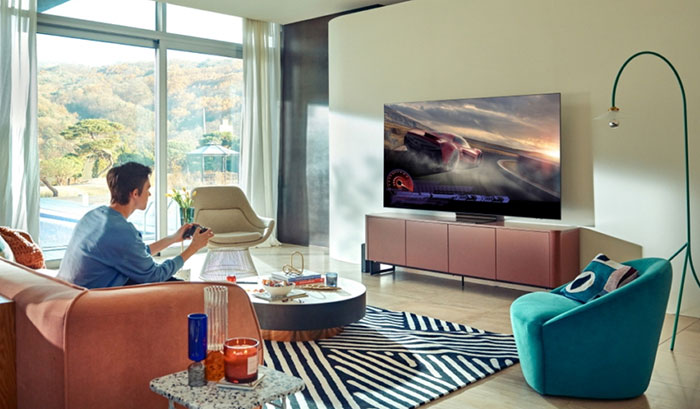Samsung has announced that its 2021 lineup of Neo QLED (Mini LED) and QLEDs will take on board some of the most popular features of its gaming monitors. The firm obviously has its eye on the latest gen PlayStation and Xbox console markets citing smooth 4K 120Hz gaming capabilities, but the addition of variable refresh rate (VRR), low latency, low input lag technology, and fast response times are going to be popular to those using these big screens for PC gaming too.
"Consumers want premium TVs that can enhance the gaming experience – whether they are playing on PC or on a console," said Younghun Choi, EVP at Visual Display Business, Samsung Electronics. "This is why it was critical for us to build upon and optimize key gaming features from both our award-winning monitors and TV displays in 2021. These enhancements will allow consumers to unlock the full power of next-gen gaming on our Neo QLED and QLED line."
Introductions to the 2021 line-up of premium TVs from Samsung will include the new Game Bar. Samsung describes this as an intuitive UI which provides quick access to parameter adjustments such as aspect ratio, input lag, Bluetooth device connections and more. Moreover, it facilitates optimised game QLED gaming visuals via the Samsung AI processor.

Pondering over specific models, the Samsung Q90A 50-inch and all other QLED models 55-inch and larger are the first TVs to offer support for AMD FreeSync Premium Pro Technology. This is best known for its PC application but will enable true HDR, tear-free, stutter-free low latency gaming for consoles too.
Another benefit brought to the latest TVs is the implementation of the immersive ultra-wide gaming experience. Specifically, PC gamers will be able to make use of these UW modes. Models that support these aspect ratios (21:9 and 32:9) include the Q70A and above.
Rounding off the audiovisual feast here, Samsung says that the new 2021 Neo QLED and QLED TVs deliver crisp, clear, and immersive audio – saving the need for additional speakers. Interestingly, Game Object Tracking Sound uses AI tech for positional audio, helping the audio landscape reflect the on-screen action.













